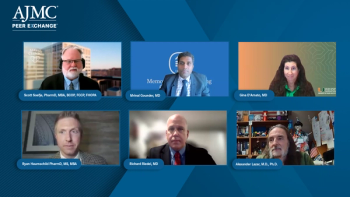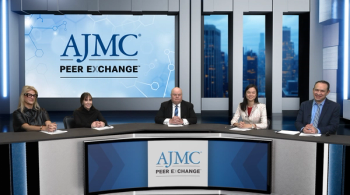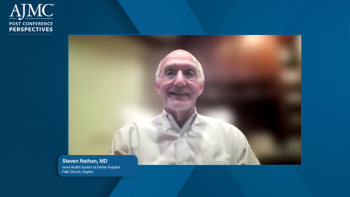
Treating Progressive Fibrosing Interstitial Lung Disease
Alicia M. Hinze, MD: Progressive fibrosing ILD [interstitial lung disease] is terminology that’s used to describe a phenotype of interstitial lung disease that doesn’t stay stable but does progressively worsen. This can be with regard to progression of pulmonary abnormalities or a function as assessed by pulmonary function testing [PFT]. There are different definitions that are used to define: What does progressive mean?
One definition that is used is a decline of greater than or equal to 10% of FVC, or forced vital capacity, on PFTs. Another parameter that can be looked at would be the diffusion capacity, or diffusing capacity for carbon dioxide on PFTs if that’s reducing by 15%. If the reduction in the forced vital capacity, that’s FVC again, on pulmonary function testing is maybe 5% to 10%, but there’s progression of interstitial lung disease on PET [positron emission tomography] scan or the patients are noting that they are becoming progressively short of breath. These are all different definitions of progressive fibroses, lung disease.
These changes between 12 and 24 months that we’re looking at may be occurring, and we may use this definition. Progressive fibrosing lung disease is really the broad overview term that’s used to describe progressive fibrosing lung disease, as the name would suggest. This is not only idiopathic pulmonary fibrosis; any interstitial lung disease that is showing these features of progression falls under this umbrella term. Any of those interstitial lung diseases with an underlying autoimmune disease for example, or even other interstitial lung diseases that may be secondary to exposures, for example, can fall under this umbrella term. It’s an umbrella term describing interstitial lung disease. But then we will separate it out into, for example, interstitial lung disease driven by an autoimmune process or an interstitial lung disease that is potentially idiopathic, falling under that idiopathic pulmonary fibrosis term.
It’s actually very important to make this distinction, because right now if progressive fibrosing lung disease is caused by or underlies an autoimmune disease, we’ll use therapies directed at suppressing the immune system. However, in idiopathic pulmonary fibrosis, the drugs that are used are antifibrotic agents that are approved. Of course, there are a couple of trials actually underway to see if the antifibrotic therapies may be important to use in the context of autoimmune disease. Because it does show this progressive fibrosis, and perhaps either using antifibrotic agents with the agents that suppress the immune system may have significant impacts on overall course of disease.
Again, these studies are still underway, and they’re phase 3. It’s possible, for example, in autoimmune diseases with ILD, that a combination therapy actually may be the best treatment. But right now we’re using immunosuppression therapies for those driven by autoimmune disease, whereas the idiopathic pulmonary fibrosis is being treated with the antifibrotic therapy.
Gary L. Johnson, MD, MBA: We actually don’t make a distinction between P-ILD [progressive ILD] and ILD. It’s splitting hairs, and the bottom line is that it really doesn’t matter from the health plan perspective.
Newsletter
Stay ahead of policy, cost, and value—subscribe to AJMC for expert insights at the intersection of clinical care and health economics.






































